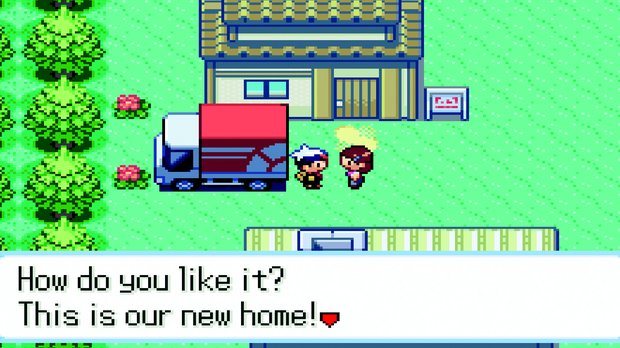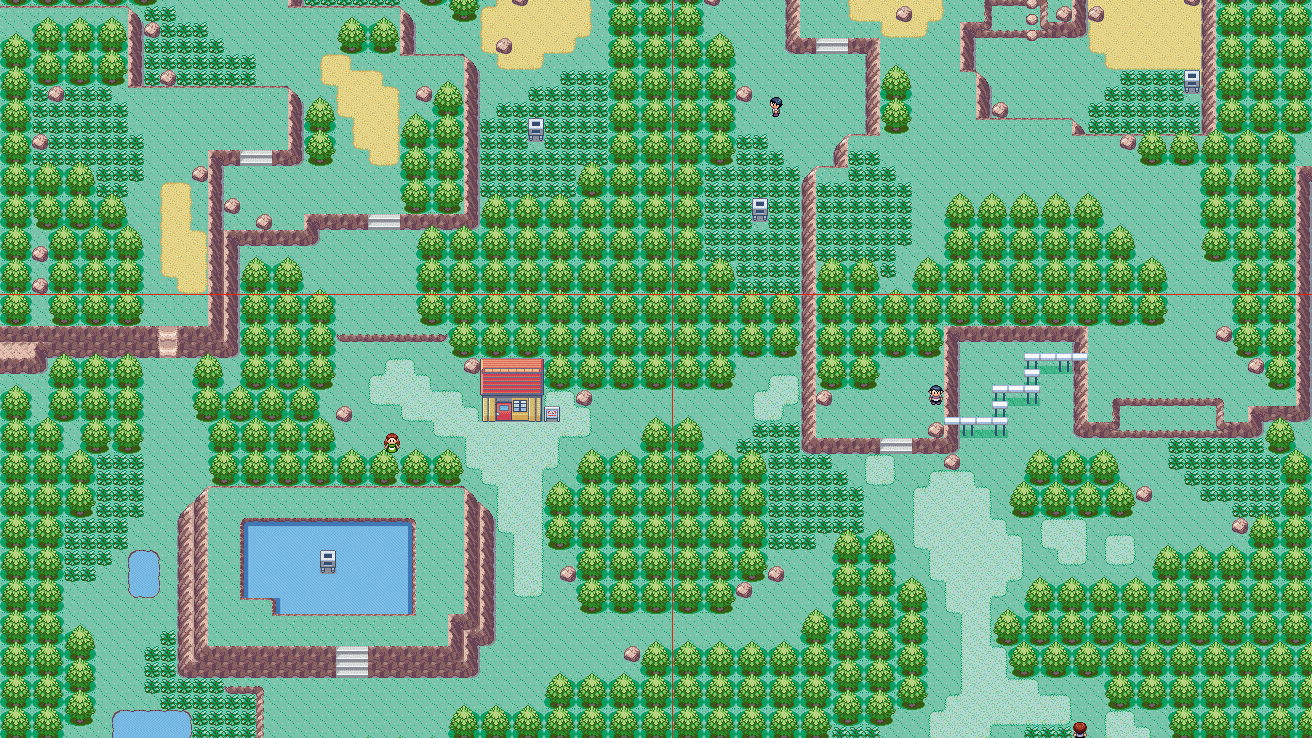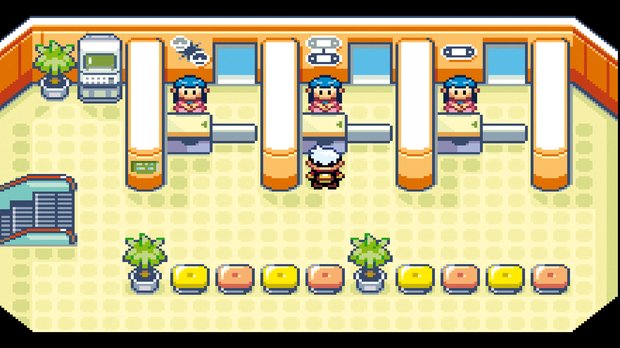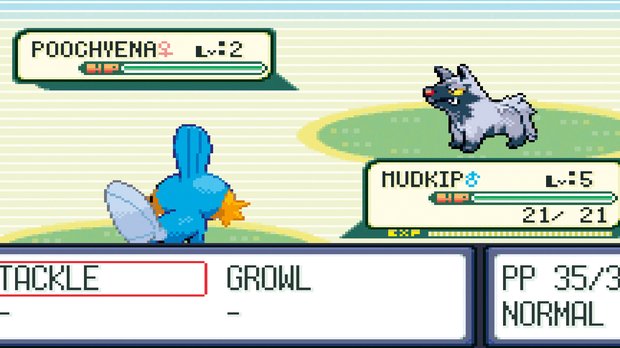This is why the original Ruby and Sapphire changed Pokemon forever
To the unschooled, Pokémon hasn’t changed a bit since its Game Boy debut in 1999. Animé-eyed kid adopts one of three elemental monsters from a short-sighted professor (“Are you a boy or a girl?”), sets out to battle trainers at the merest meeting of eyes, prevents a criminal corporation from triggering some dark future, smashes an Elite Four, splashes hundreds on soda pop, passes through a cave inevitably filled with Zubats and still finds time to visit mum.
To the schooled, however, each mainline Pokémon RPG is worlds apart and Pokémon Ruby and Sapphire tore up the foundations with such vigour it made linking with previous versions impossible. There were 135 brand new pocket monsters, each with unique abilities and natures, frantic tag-team battles over four-man multiplayer and new weather conditions. There were new Pokéballs and berries. You could even groom your team for beauty contests.

Swirl the water’s surface with a few turns of the finger and the cloudy murk of this third generation outing – which after launching on the GBA in 2003 went on to become the system’s biggest seller – suddenly clears. Take the revised EV system, which wasn’t documented in the manual or talked about by Hoenn residents, but became a monumental boon to trainers.
With EVs (effort values), Pokémon receive stat bonuses depending on whom they defeat. If you want to increase Torchic’s speed, for example, fight a Zubat, a species whose highest stat is speed. Ruby/Sapphire tidied up the mechanics and the dishing out of EV points, setting a max number at 510 (you need 252 to maximise a stat). The system became mathematically perfect and harder to exploit.
It’s just one of many mechanics hidden to all but Poké-scholars. Another was the Pokérus, a status ailment doubling EVs. Equally unexplained, the Pokérus can spread to other party members, a quite beneficial affliction. Again, the Pokérus did not debut here, but was refined from a half-baked concept. In Gold and Silver, for instance, the randomly generated Pokérus infects just one in 65,536 Pokémon – there’s more chance of encountering a shiny, an ultra-rare alternate coloured Pokémon.

Even if you did find a Pokérus-infected critter in the wild there was no way of knowing, seeing as Generation III was the first to signify the virus with a menu icon. Nurse Joy was a tad more illuminating than Professor Elm’s vague Gen II description, offering the more helpful line, “Your Pokémon may be infected with Pokérus. Little is known about the Pokérus except that they are microscopic life forms that attach to Pokémon. While infected, Pokémon are said to grow exceptionally well.” Thanks, nurse.
The introduction of 77 different abilities gave Pokémon new powers: those with Arena Trap could prevent most opponents switching out in battle, Pokémon with Immunity couldn’t be poisoned, Illuminate doubled the rate of wild battles and Insomnia made Pokémon immune to sleep. Each Pokémon also adopted a new vitality.
Sign up to the GamesRadar+ Newsletter
Weekly digests, tales from the communities you love, and more
Natures characterised them further, for the first time feeling more than an animated sketch with a digital roar. Your Baltoy, say, could be bashful, quirky, serious or lax, and each of the 25 affected growth rates of two select stats, increasing one by 10% and decreasing another by the same. Nature also determined what flavour the Pokémon liked, an important factor in the making of Pokéblocks, mixed in a blender from berries you’ve picked. Each stat is associated with a flavour (attack is paired with spicy, for instance). Because lonely natures boost the attack stat, it stands to reason that lonely Pokémon love spicy food. With this in mind, fix your lonely Poochyena a spicy Pokéblock and you’ll buff its coolness.

Why do it? Because in another Ruby/Sapphire first, Pokémon contests were judged in five categories: coolness, cuteness, toughness, smartness and beauty with winners receiving ribbons (these adorned your Pokénav for the ultimate bragging rights). It was a brand new way of both rewarding and interacting with Pokémon who previously, when they weren’t fighting, sat stuffed in a ball.
The collecting of more than 40 differently flavoured berries for these contests was a quest in itself, with budding fruit-hunters planting seeds and regrowing the items which, as well as being ripe for blenders, cured status ailments, boosted stats and even raised friendship – crucial for Pokémon like Chansey and Igglybuff who only evolve when you’ve built a bond. Then there were tag-team battles in which, for the first time, up to four players could link up and throw down. A busier alternative to one-on-ones, turning sessions from simple diversions to full-blown social events, multi-Poké matches were so successful Black and White piled on extra for three-on-threes.
Weather also improved fights. Hail joined three existing conditions – sunlight, rain, and sandstorm – damaging non-ice types for five rounds. But weather had an important application as a presence outside battle. Areas such as Route 119’s Weather Institute were perpetually pounded by torrents that powered up water moves, while the Desert Ruins and Mirage Tower were lashed with accuracy-decreasing sandstorms. It gave each route character, even danger – a Magmar fought in searing sunshine is a much more powerful adversary.

The world itself was based on Kyushu, the mountainous third largest island of Japan which, like Hoenn’s Mt. Chimney, has an active volcano sat at its heart. In the game it’s rotated clockwise by 90° to give the impression of adventure, an epic journey from left to right. Nothing, however, quite resembled the grandness of competition and it’s fitting to end our feature here, the melting pot in which all these new or improved features quietly bubbled. The stars of the show were the Pokémon themselves. There were now 135 brand new reasons to play again, to go on an adventure, battle friends over and over, or trade for that elusive Pokémon.
Whether you played the games to practise the hidden EV arts on a lowly Luvdisc, tackle the Elite Four with a fearsome Flygon, put a Skitty out to stud or simply groom a Linoone, hordes of Pokémon cute and cuddly, rare and common, docile and scary applied the spark to Ruby and Sapphire’s powder keg. Those who dug a little deeper saw Ruby and Sapphire as they were: among the most important games in the series, building on previous entries and laying fresh groundwork for the future, and eventually coming full circle to revolutionise the capturing of Pokémon once more on 3DS with remakes Omega Ruby and Alpha Sapphire by introducing the PokéNav Plus.



